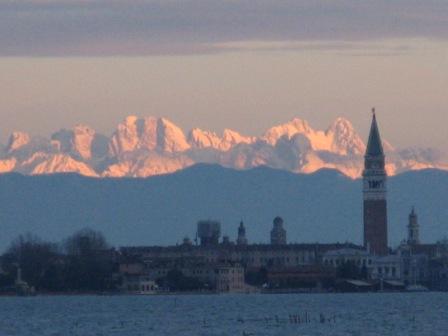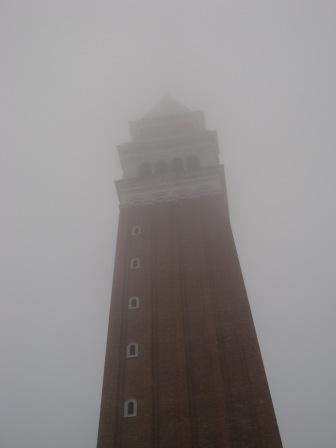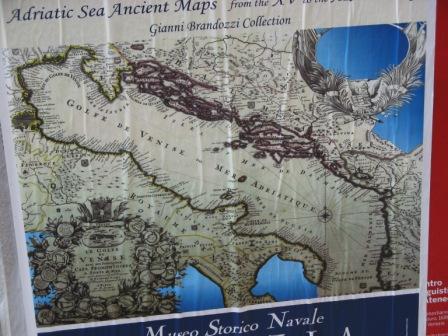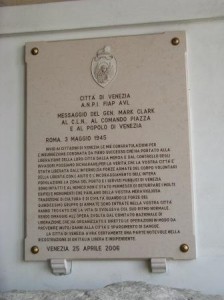“Marvel” is probably not the right word, but it’s the best I can think of to describe any occurrence here — and there are many of them — which if it were a jigsaw puzzle, you’d be at the point of discovering that there were some very important pieces missing. Not pieces that fit together, necessarily, but an important piece gone here, and another absent there, the lack of which make the total picture kind of weird and not a whole lot like the image on the box. That’s bad enough, but never fear: You’ll also discover that there are pieces coming to hand which you’ve wasted a lot of time trying to use before you understood that they had wandered over from other puzzles. The picture the puzzle shows when you finally give up may not look very much like the one you were aiming for.
Having said all that, today’s marvel is the case of the refurbishment of an additional car ferry. Some background:
- The Lido is a long, narrow, sandy island which which separates the Venetian Lagoon from the Adriatic Sea. It is about 11 km (6.8 miles) long, and counts about 17,000 residents.
- There are cars and trucks and motorcycles on the Lido. This is one of the many ways in which the Lido doesn’t resemble Venice at all, even though technically it is part of the Most Beautiful City in the World (MBCITW).
- These vehicles often travel to the rest of the world by means of a car ferry which stops at Tronchetto just at the head of the bridge to the mainland, and also vice versa. Cars also travel to and from Pellestrina via car ferry. Taking a car to Pellestrina seems a bit insane, since there are buses and all you can do with your car when you get there is park it, but people with cars, especially on the Lido, don’t consider anything a valid excuse not to drive.
- There are more and more cars etc. on the Lido (last count I read said two for each person) because Lido people have a sort of collective mania, like Obsessive Car Disorder. Of course cars are useful if you need to go to the mainland or somewhere else out there, but the other day a friend of mine drove his car from his house to an event on the beach, a distance which takes under ten minutes to walk. He has no physical handicaps, and he wasn’t carrying anything. The sun was shining. Parking, traffic, pollution, fatal accidents — the once-fabled Golden Island has them all.
- These cars are carried aboard fairly typical car ferries, which are essentially large rectangular floating platforms with a hinged ramp at each end.
The first and oldest working member of the fleet, the San Giorgio, was acquired from Great Britain after it had finished its service in World War 2. Lino remembers when San Giorgio, began regular public service. Until then, the few wheeled vehicles that needed to reach the Lido (presumably for very long stays) arranged their own ferry transport. He remembers that the ramps were raised and lowered by hand, by means of a sort of capstan operated by the mariner; also, there was no cabin for the captain. [The picture at right is of the “Marco Polo,” a typical example.]
- There are a number of important annual events on the Lido which drastically increase the traffic. The Venice Film Festival is one, another is the Vogalonga (add boat-trailers to the mix), and sometimes the first or last stage of the Giro d’Italia. The start of this year’s race is on Saturday, May 9, and more than 600 more cars are anticipated on the Lido. The residents’ cars are going to be forced to stay home, I think. They’ll probably all be clustered in the bars, drinking steadily. The cars, I mean.
- The transport company (ACTV) has six working ferries. This isn’t enough, especially between April and October. This means that long lines form. The mood of people in long lines, especially in the summer, especially if they have small children, needs no exegesis from me.
- In the winter, these six ferries make 25 roundtrips per day; this number increases, somewhat, during the high season in the summer. The company says that each can carry up to 70 cars. Sounds good, unless you’re driving a cement mixer or a supermarket delivery truck, or a camper and towing a boat trailer, or anything else that takes up extra space. It can get a little tense at the boarding area.
Enter the Phantom Ferry, the much-needed and -heralded seventh member of the fleet. It does exist, but only in a general sense. I mean, you can touch it. You just can’t use it.
Originally named “Salamina,” for the eponymous Greek island, the ACTV bought it from Greece in February, 2008 at a price they boasted was a steal. Sorry, I mean bargain. And why did they go to Greece to buy a second-hand ferry? Because they needed it fast. Remember this detail. No time to order a new one, and the price was right. Even better, it measures 100 meters in length (compared to the measly 74 meters of the other ferries) and will carry up to 100 cars. Just a little fixing-up, and a new name (“Lido di Venezia“), and it would be in service for the summer season. Of 2008.
I remember seeing this tired old ferry whenever we rowed past the Giudecca. It was moored behind a ramshackle, seemingly abandoned boatyard, sitting there peacefully like one of those little old people who accidentally get left behind by their family at the interstate rest stop.
Now we’re on the verge of the summer season, 2009, and still no sign of the Lido di Venezia. She’s been moved into the Arsenal, where work has been underway. Turns out there have been a few those bargain fixer-upper surprises.
- The current landing stages are all built for 74-meter-long ferries, not for one that’s a third again as big, so something has to be done there;
- The motors aren’t marine motors, but truck-type motors, and the Naval Registry says that these motors can’t operate above a certain number of rpm’s, which are not in fact enough to enable the ferry to make its maneuvers;
- There are other technical details that need adapting, altering, or otherwise fixing. Many.
So, this amazing bargain, at a paltry 3,000,000 euros, ready for almost instant use, has had costs added for “small technical checks” which amount to an additional 983,000 euros.
To summarize: That’s nearly 4,000,000 euros. For a used ferry. That you can’t operate. But which was a terrific bargain.
The ACTV has responded to the publication of this saga in the paper by saying, essentially, that all this was known at the outset, all the costs planned for, everything under complete control. So far, though, I’m not sure when it’s supposed to start working. Projected dates don’t have much reality here, in a city where it seems that plans are often calculated to the nearest round century.
Seeking some perspective, I tried to discover how much a ferry like this would have cost if built to order. I haven’t found it yet, but I have learned that the Italian Navy, according to one of its own documents, ordered a similar craft which was only 20 meters long, and its price is given as 3,992,000 euros. So I suppose one could say that the ACTV did, indeed, score a deal. The only drawback is that the Navy’s ferry is working.
Just another day in the Most Beautiful City in the World.







